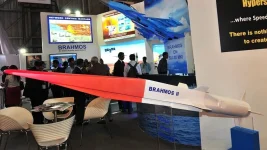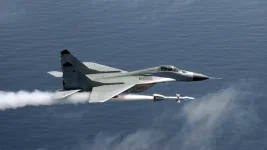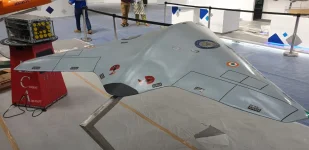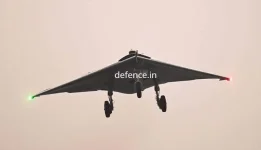- Views: 2K
- Replies: 4
India's Defence Research and Development Organisation (DRDO) has revealed significant advancements in the development of the RudraM-III, a state-of-the-art hypersonic missile.
Designed to be launched from the Indian Air Force's (IAF) frontline Su-30MKI fighter jets, this long-range weapon is set to substantially enhance the country's aerial strike capabilities and promote self-reliance in critical military technologies.
The RudraM-III is primarily an air-launched anti-radiation missile, engineered to automatically detect, track, and neutralize enemy radar stations, communication hubs, and other sources of radio frequency signals.
This capability is vital for conducting Suppression of Enemy Air Defences (SEAD) missions, which involve disabling an adversary's air defence network to allow friendly aircraft to operate safely and effectively.
The missile is the latest and most advanced in the indigenous Rudram series, evolving from its supersonic predecessors into a far more potent hypersonic platform.
One of the missile's key features is its incredible speed. Powered by a solid-fuel ramjet engine, the RudraM-III can achieve hypersonic speeds exceeding Mach 5 (more than five times the speed of sound) as it approaches its target. This extreme velocity gives enemy air defence systems very little time to react, greatly increasing the missile's chances of success.
Furthermore, it employs a sophisticated passive seeker that homes in on enemy electronic emissions without revealing its own position, making it exceptionally stealthy and difficult to counter. Pilots have the flexibility to lock onto a target either before or after launching the missile, allowing for dynamic engagement in complex combat scenarios from altitudes up to 15 kilometres.
Beyond its primary anti-radiation role, the RudraM-III is engineered for versatility. The missile features a modular design, which allows it to be equipped with different types of warheads tailored for specific missions.
This enables it to effectively engage a wide array of high-value ground targets, including fortified command centres, underground bunkers, and surface-to-air missile (SAM) launchers.
This multi-purpose capability makes it a vital asset for the IAF's operational preparedness in contested regions like the Indo-Pacific.
The program has achieved several key milestones recently.
Throughout 2023, DRDO successfully developed and integrated critical subsystems, and extensive compatibility trials were completed with the Su-30MKI at the Aircraft Systems Testing Establishment (ASTE) in Bengaluru.
These tests confirmed that the missile integrates seamlessly with the aircraft's existing systems without requiring any structural modifications.
A major breakthrough occurred in July 2025, when the RudraM-III underwent successful release trials from a Su-30MKI over the Bay of Bengal, demonstrating stable flight and target acquisition.
The missile is now scheduled for final user trials by the end of 2025 at the Integrated Test Range in Chandipur, Odisha.
Full operational clearance is anticipated between 2026 and 2027, with the Ministry of Defence expected to approve an initial order for over 200 units, to be produced by Bharat Dynamics Limited (BDL).
Looking ahead, DRDO is exploring the integration of the RudraM-III with other major IAF platforms, including the Rafale and the forthcoming Tejas Mk-2 fighter jets.
The successful induction of this missile will provide a formidable boost to India's standoff strike power and reinforce the nation's strategic deterrence capabilities.




